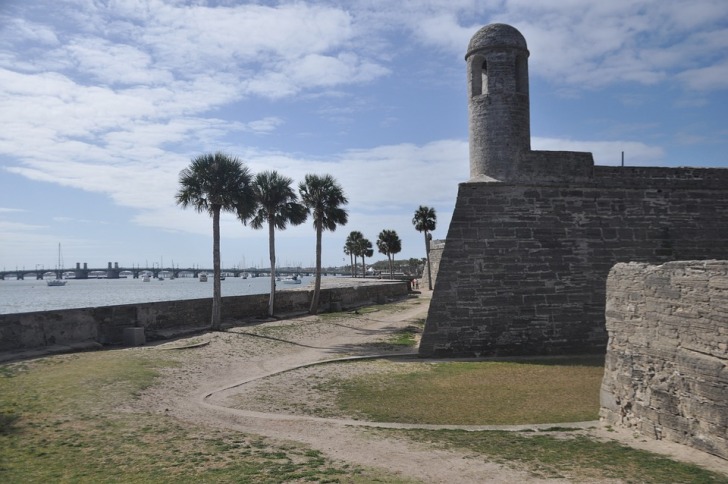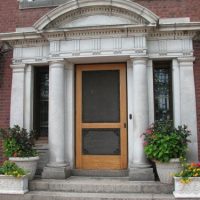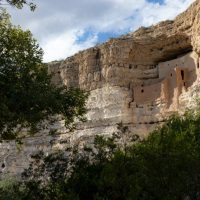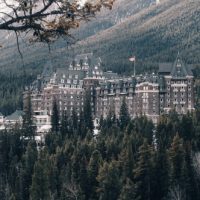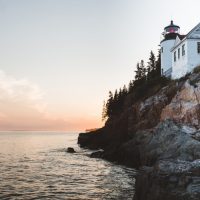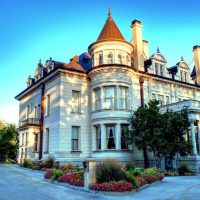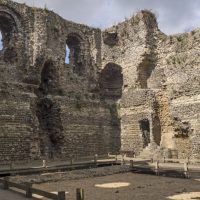One of Florida‘s castillos dates from 1672, when building began, long before the United States formed and Florida became a state.
Other Florida castles resulted from inspired artists’ whimsy, imagination, and prolific efforts.
Slave labor built one of Florida’s oldest chateaus, and another exists because of a runaway bride.
Each majestic building on this list has historical, artistic, and architectural value, and several have found their way onto the National Register of Historic Places.
Visit each of Florida’s most beautiful castles at least once in your lifetime.
Contents
- Castillo de San Marcos
- Braden Castle
- Villa Zorayda
- The Stetson Mansion
- Henry Morrison Flagler Mansion
- Pillars Castle
- Coral Castle
- Solomon’s Castle
- Florida Safety Overview
- Frequently Asked Questions
- Which of Florida's most beautiful castles has existed longest?
- What did Howard Solomon tell his daughter Alane when she asked why he built his castle?
- Why did Edward Leedskalnin build Coral Castle?
- Why did Charles Adrian Pillars build his castle?
- How many rooms did the 1902 Henry Morrison Flagler mansion contain?
- When did Hatmaker John B. Stetson build his luxury home?
- What architectural style did Franklin W. Smith use to build Villa Zorayda?
- What year did a brush fire destroy a large portion of Braden Castle?
- How does tabby differ from coquina?
- What is coquina?
Castillo de San Marcos
The Castillo de San Marcos, located in Saint Augustine, holds the title of the oldest masonry fortification and best-preserved Spanish colonial castle in the 48 contiguous United States.
The castle’s masonry walls consist of multicolored shells turned into the sedimentary rock called coquina.
When components of coquina — broken shells, sand, and calcium carbonate — combine, it creates natural concrete.
The material shapes easily due to its softness compared to other substances.
Interestingly, coquina absorbs force.
Therefore, when bombarded by cannon fire, the cannon balls sink into the walls instead of shattering them.
You can take a virtual tour before planning your trip to ensure that you don’t miss any details when you visit this former bastion of Spanish influence.
Braden Castle
Dr. Joseph Braden designed the mansion and sugar mill on the Braden plantation.
Along with his brother, Hector, Dr. Braden contracted cabinet maker Ezekiel Glazier and Presbyterian minister Reverend Edmond Lee to supervise the project and bring Joseph’s vision to life in 1850.
Using the labor of the 85 enslaved people that the Bradens brought to Florida, Ezekiel first oversaw the making of tons of tabby or artificial coquina, a concrete-like substance made of burnt, crushed, and sifted oyster shells.
To make tabby, enslaved people shoveled oyster shells into large burlap bags at low tide and dumped them into burn pits.
They mixed the resulting lime with sand, water, and more crushed shells, then poured the tabby into wooden forms.
Unlike blocks of coquina the Spanish quarried from the ground, tabby makers poured their substance into the construction forms in layers.
The result looked like blocks.
Instead, however, it formed a solid wall.
In 1903, unfortunately, a brush fire gutted the castle, burning the shingled roof, heavy wooden support beams, and the grand staircase.
Visitors now use the grounds of Braden Castle for picnics and other recreational activities.
The remains of the castle became the home of the “Tin Can Tourists of America” in 1924: wealthy farmers, lawyers, and doctors from the North who traveled in their Model T’s to camp at Braden Castle.
By April 4, 1924, the Tin Can Tourists had incorporated themselves under Florida law as the “Camping Tourists of America.”
Villa Zorayda
Inspired by the Alhambra Palace in Granada, Spain, Franklin W. Smith built his winter home, Villa Zorayda, in St. Augustine in 1883.
Constructed with a single, square tower at the front left corner, with four walls surrounding an inner court, the Islamic horseshoe archways and long balconies provided a stately atmosphere.
The architectural style — known as Moorish Spanish Revival — eventually spread throughout the city.
The word “Moor” referred to the Berbers from the Maghreb region of North Africa, who conquered Spain and Portugal in the 700s.
Smith owned Villa Zorayda for 20 years before turning it into a restaurant and club.
In 1913, Abraham Musallem bought the club and a large part of Smith’s art collection.
Abraham and his wife, Olga, operated the club as a casino and speakeasy until the late 1920s.
Then, they decided to live in the mansion instead. In 1933, they turned the estate into a museum.
In the 1960s, sons Eddy and Wally Musallem refurbished the property and called the museum Zorayda Castle.
In 2008, after a second restoration overseen by Eddy’s daughter, Marcia, and her husband, James Byles, the museum reopened as Villa Zorayda.
As of 2022, the museum and grounds have been family-owned for nearly 110 years.
The Stetson Mansion
Hatmaker John B. Stetson built his luxury home in DeLand, Florida, in 1886, the only Gilded Age estate in Florida designed and constructed before 1900.
Stetson’s palatial mansion boasted Thomas Alva Edison as its electrician, going from gaslight to electric light.
The estate took overstated opulence to its maximum, with 16 different parquet floor patterns, 10,000 leaded glass windowpanes, and masterful wooden carvings.
Railway magnate Henry M. Flagler built a railway spur to the Stetson mansion to deliver the finest building materials available at the time.
Currently owned by JT Thompson and Michael Solari, the 136-year-old mansion’s ten original rooms, five modernized kitchens, and 13 new bathrooms make this a perfect holiday destination for tours, weddings, and social events.
The pair also restored the original schoolhouse and meditation garden and added a carriage house to match the mansion’s style.
Join the over 20,000 visitors that visit each year during the Christmas Spectacular.
Henry Morrison Flagler Mansion
Constructed in 1902 for his third wife, Mary Lily Kenan, this Gilded Age American chateau boasts 75 rooms and more than 100,000 square feet of luxury.
Named Whitehall, the Olympian marble columns, arched doorways and windows, and the red-tiled roof represent the Beaux Arts architecture first displayed at the 1893 World’s Columbian Exposition in Chicago.
Henry hired architects John Carrere and Thomas Hastings to build his mansion.
The two architects also designed the New York Public Library and Henry Clay Frick’s New York Residence on Fifth Avenue in Manhattan.
After Henry died from falling down a marble staircase in 1913 and Mary Lily remarried in 1917, Mary also died, passing ownership of the Flagler Mansion to her niece, Louise Clisby Wise Lewis, who sold the home to investors who converted the estate into a hotel.
However, by 1959, the estate had fallen into such disrepair that the owners wanted to demolish it.
Instead, one of Henry’s granddaughters, Jean Louise Flagler Matthews, formed a non-profit corporation, the Henry Morrison Flagler Museum, and saved it from destruction.
The museum currently hosts over 100,000 guests every year.
Pillars Castle
St. Augustine sculptor Charles Adrian Pillars built his castle in 1921 as an art studio.
Pillars later moved to Jacksonville, where his tribute to World War One veterans Spiritualized Life, The Winged Victory, stands in Memorial Park.
In addition, C. Adrian Pillars helped design the city flag of St. Augustine, which officials display during civic events.
Pillars Castle now operates as a luxury vacation rental.
According to the current owners, the pink color on the walls comes from the original Spanish clay weathering.
In addition, the current owners, Jeannine Peterson and Michelle Kirby operate the castle as an Airbnb and a micro-wedding venue as of July 2021.
They accommodate 12 overnight guests at a time.
Coral Castle
Unlike the Flagler Mansion, where the happy couple lived until Henry’s death, the Coral Castle commemorates the unrequited love of 26-year-old Edward Leedskalnin, an immigrant from Riga, Latvia, who fell for 16-year-old Agnes Scuffs.
Agnes jilted the grief-stricken Edward one day before their wedding was supposed to take place.
Instead, the five-foot-tall, 100-pound Ed went on to sculpt more than 1100 tons of coral rock into the outstanding masterpiece of engineering known by all as the Coral Castle.
Ed spent 28 years constructing the castle, from 1923 to his death in December 1951.
His last communication was a sign on the castle door: “Going to the hospital.”
After taking the bus to Jackson Memorial Hospital in Miami, Ed died just a year before he would have qualified for Social Security.
Billy Idol recorded his song, Sweet Sixteen, from his 1986 album Whiplash Smile, on location at the Coral Castle as a tribute to Ed and his unrequited love for Agnes Scruffs, who never saw the castle he’d built in her honor.
Solomon’s Castle
This castle in Ona, nearly 54 miles east of downtown Sarasota, housed the family while serving as sculptor Howard Solomon’s studio and his most impressive, massive work.
He bought the property in 1970 and spent 18 years building the castle and adding the “Boat in the Moat” restaurant beside it.
Howard Solomon worked alone on most of the construction.
When his daughter Alane asked why he chose to build his edifice, he replied, “a tower here, a turret there, before you know it, you have a castle.”
The family lives on the second and third floors, while Howard’s art fills the first floor.
Howard often referred to himself as the Da Vinci of Debris.
He used primarily recycled materials to create his sculptures and stained glass windows.
On August 23, 2016, surrounded by his family, Howard passed away in his beloved castle.
His daughter, Alane, continues her father’s legacy as head chef of The Boat in the Moat and chief publicity officer of Solomon’s Castle.
Florida Safety Overview
READ THE FULL REPORT: Florida Safety Review
Safety Index:
- OVERALL RISK: MEDIUM
- TRANSPORT & TAXIS RISK: MEDIUM
- PICKPOCKETS RISK: MEDIUM
- NATURAL DISASTERS RISK: MEDIUM
- MUGGING RISK: MEDIUM
- TERRORISM RISK: HIGH
- SCAMS RISK: MEDIUM
- WOMEN TRAVELERS RISK: LOW
Frequently Asked Questions
Which of Florida's most beautiful castles has existed longest?
The Spanish commenced building Castillo de San Marcos in 1672.
What did Howard Solomon tell his daughter Alane when she asked why he built his castle?
“A tower here, a turret there; before you know it, you have a castle.”
Why did Edward Leedskalnin build Coral Castle?
He was jilted one day before his scheduled wedding to 16-year-old Agnes Scruffs.
Why did Charles Adrian Pillars build his castle?
The sculptor used his castle as an art studio and a primary residence.
How many rooms did the 1902 Henry Morrison Flagler mansion contain?
The mansion, built for Flagler’s third wife, had 75 rooms.
When did Hatmaker John B. Stetson build his luxury home?
He constructed it in 1886.
Stetson’s palatial mansion boasted Thomas Alva Edison as its electrician.
What architectural style did Franklin W. Smith use to build Villa Zorayda?
He used Moorish Spanish Revival, which spread throughout the city.
What year did a brush fire destroy a large portion of Braden Castle?
The shingled roof, heavy wooden support beams, and the grand staircase burned in 1903.
How does tabby differ from coquina?
Tabby is an artificial coquina made by burning, grinding, and sifting oyster shells into lime before mixing it with sand, water, and crushed shells.
Coquina requires quarrying.
What is coquina?
Multicolored shells mix with sand and calcium carbonate, then settle to turn into a soft sedimentary rock called coquina.
Interestingly, coquina absorbs force, so cannon balls sink into the walls under bombardment instead of shattering them.
